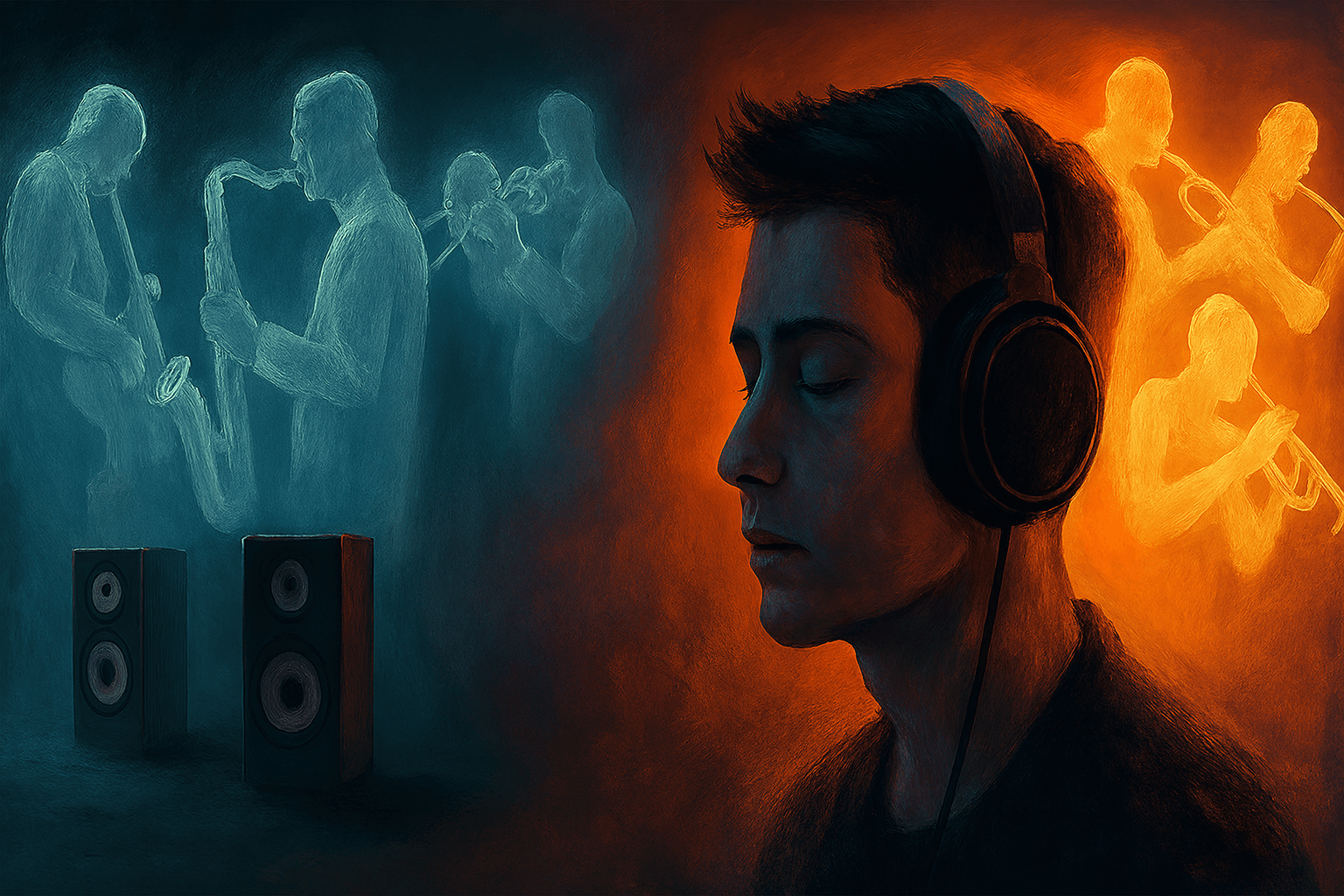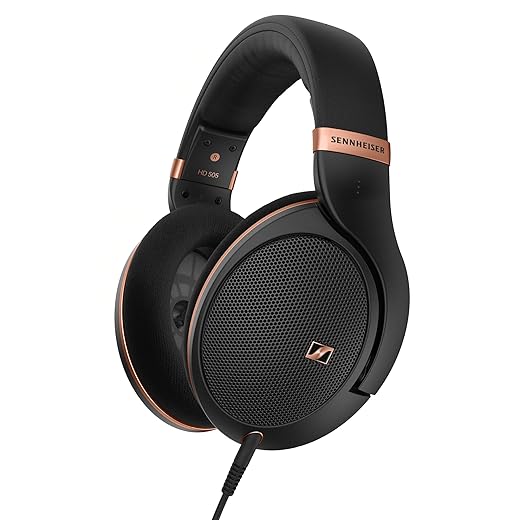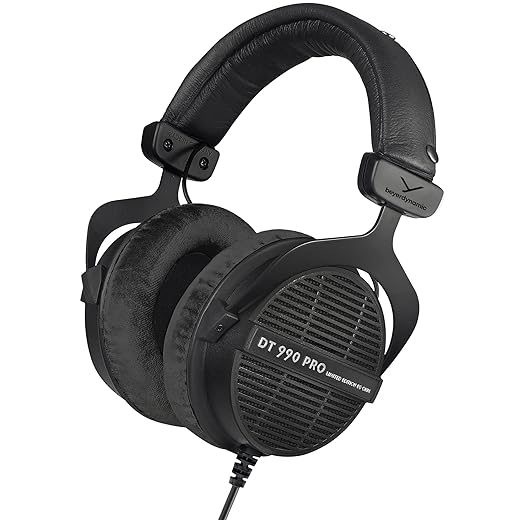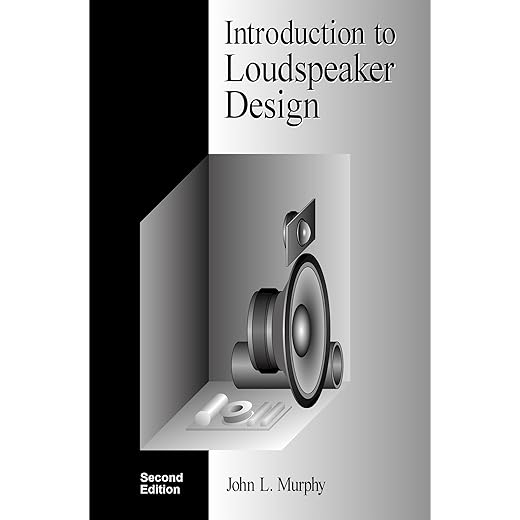Introduction: The Invisible Stage
The soundstage is not a luxury reserved for audiophile setups or multi-channel extravagance. It is a foundational phenomenon—an invisible stage that emerges the moment stereophonic separation is introduced. Whether one listens through speakers or headphones, the soundstage is always present, waiting to be revealed. It is the spatial illusion that transforms sound from mere frequency into experience, from playback into presence.
This post explores the nature of the soundstage across two primary listening modalities—speakers and headphones—and clarifies the role of spatial sound effects in shaping, enhancing, or simulating this illusion. We’ll examine how the soundstage is constructed, perceived, and sometimes engineered, and why it remains one of the most emotionally resonant aspects of music listening.
The Anatomy of a Soundstage
At its core, the soundstage is the perceived spatial arrangement of sound sources. It is the illusion that instruments and voices occupy distinct positions in a three-dimensional field. This field may have width (left to right), depth (front to back), and height (top to bottom), though not all playback systems reveal all dimensions equally.
The basic requirement for a soundstage is stereophonic separation. With two distinct channels—left and right—audio engineers can place sounds at specific points between them using techniques like panning, delay, and reverb. This creates the illusion of placement. A guitar might sit slightly left, a vocal dead center, and a cymbal shimmer far right. The listener, in turn, perceives a stage—a sonic tableau.
But the soundstage is not just about placement. It’s about presence. It’s the difference between hearing a voice and feeling that someone is singing in the room. It’s the moment when sound becomes dimensional, when silence gains shape, and when the listener is no longer outside the music but inside it.
Speakers: The Emergent Soundstage
Listening through speakers offers the most natural emergence of the soundstage. Because speakers interact with the room, the listener’s body, and the air itself, they create a physical sound field. This field allows for externalization—the sensation that sound is coming from out there, not from the playback device.
Room Interaction
The room plays a crucial role in shaping the soundstage. Reflections, absorption, and diffusion all contribute to how sound travels and settles. A well-treated room can enhance depth and clarity, while a poor acoustic environment can collapse the stage into a muddy blur. Speaker placement—distance from walls, toe-in angle, height—also affects imaging and spatial coherence.
Speaker Design
Certain speaker designs are known for their holographic imaging. Dipole speakers, time-aligned drivers, and phase-coherent designs can create a soundstage that feels sculpted in air. The speakers “disappear,” and the music seems to float independently, as if conjured from the ether. This is often described as a “holographic” soundstage—where instruments have not just position but shape, air, and tactile presence.
Listener Position
The “sweet spot” is where the soundstage blooms. Sitting equidistant from both speakers, with ears aligned to the tweeters, allows the stereo image to lock in. Move too far off-axis, and the illusion begins to unravel. But within the sweet spot, the soundstage can be breathtaking—vocals center and forward, drums deep and wide, strings layered in shimmering tiers.
Headphones: The Engineered Soundstage
Headphones present a different challenge. Because they deliver sound directly into the ears, bypassing room interaction and cross-channel blending, the soundstage tends to be more intimate and internal. Yet with careful design and engineering, headphones can still evoke a compelling spatial illusion.
Stereo Imaging
Even basic stereo mixes can create a sense of space in headphones. Panning places sounds left or right, and reverb can suggest distance. Open-back headphones, with wider driver dispersion and less isolation, often produce a more expansive soundstage than closed-back designs. Some models, like the Sennheiser HD800S or Hifiman Arya, are renowned for their ability to render layered, airy soundstages.
Binaural Recordings
Binaural recordings are the gold standard for headphone soundstage. Captured using dummy heads with microphones in the ear canals, these recordings preserve the spatial cues that humans use to locate sound—interaural time differences, level differences, and spectral filtering. When played back through headphones, the result is uncanny: footsteps behind you, whispers beside you, violins floating in front. The soundstage feels externalized, immersive, and eerily real.
DSP and Spatial Sound Simulation
To overcome the limitations of headphone stereo, many systems employ digital signal processing (DSP) to simulate speaker-like soundstages. Technologies like Dolby Atmos for Headphones, Waves NX, and the Smyth Realiser use head tracking, room modeling, and head-related transfer functions (HRTFs) to create a virtual 3D space. These systems can place sounds above, behind, and around the listener, mimicking the externalization of speakers.
Spatial Sound Effects: Technique vs. Illusion
Spatial sound effects are often conflated with the soundstage, but they serve a different purpose. While the soundstage is the illusion of a stage created by stereo mixing and playback geometry, spatial sound effects are the techniques used to simulate or enhance that illusion.
Stereo vs. Spatial Formats
Traditional stereo relies on two channels and panning to create a soundstage. Spatial formats like Dolby Atmos, DTS:X, and Auro-3D use multiple channels and object-based mixing to place sounds in a three-dimensional field. These formats are especially effective in multi-speaker setups but can be adapted for headphones using DSP.
Role in Music Production
Spatial sound effects are increasingly used in music production to create immersive experiences. Artists can place instruments above the listener, move sounds dynamically through space, and simulate environments. This expands the soundstage beyond the traditional left-right axis into a full dome of sound. However, the emotional clarity of the soundstage still depends on mix decisions, playback fidelity, and listener engagement.
Simulation vs. Emergence
Spatial sound effects often simulate a soundstage that would otherwise emerge naturally in speaker setups. In headphones, they compensate for the lack of room interaction and crossfeed. But simulation is not always synonymous with authenticity. A well-mixed stereo track on high-quality headphones can evoke a more emotionally resonant soundstage than a poorly executed spatial mix.
Philosophical Reflection: The Stage as Hospitality
The soundstage is more than a technical achievement. It is an act of hospitality. It invites the listener into a space where music is not just heard but hosted. It reveals the ensemble, honors the mix, and creates a threshold between silence and presence.
Whether through speakers or headphones, the soundstage is a portal. It allows us to step into the recording, to witness the interplay of instruments, to feel the breath between notes. Spatial sound effects may enhance this illusion, but they are scaffolding—not substitute. The true soundstage is built on intention, restraint, and the quiet power of separation.
Conclusion: Listening as Entry
The soundstage exists—always. It begins with stereophonic separation and unfolds through playback geometry, room interaction, and listener attention. Speakers offer natural emergence; headphones offer engineered intimacy. Spatial sound effects can simulate or extend the illusion, but the essence remains the same: sound placed in space becomes experience.
To listen for the soundstage is to listen for presence. It is to honor the mix, the medium, and the moment. It is to treat playback not as consumption but as entry—into a room, a story, a shared breath.
And in that room, whether conjured by cones or cups, the music waits—not just to be heard, but to be hosted.







